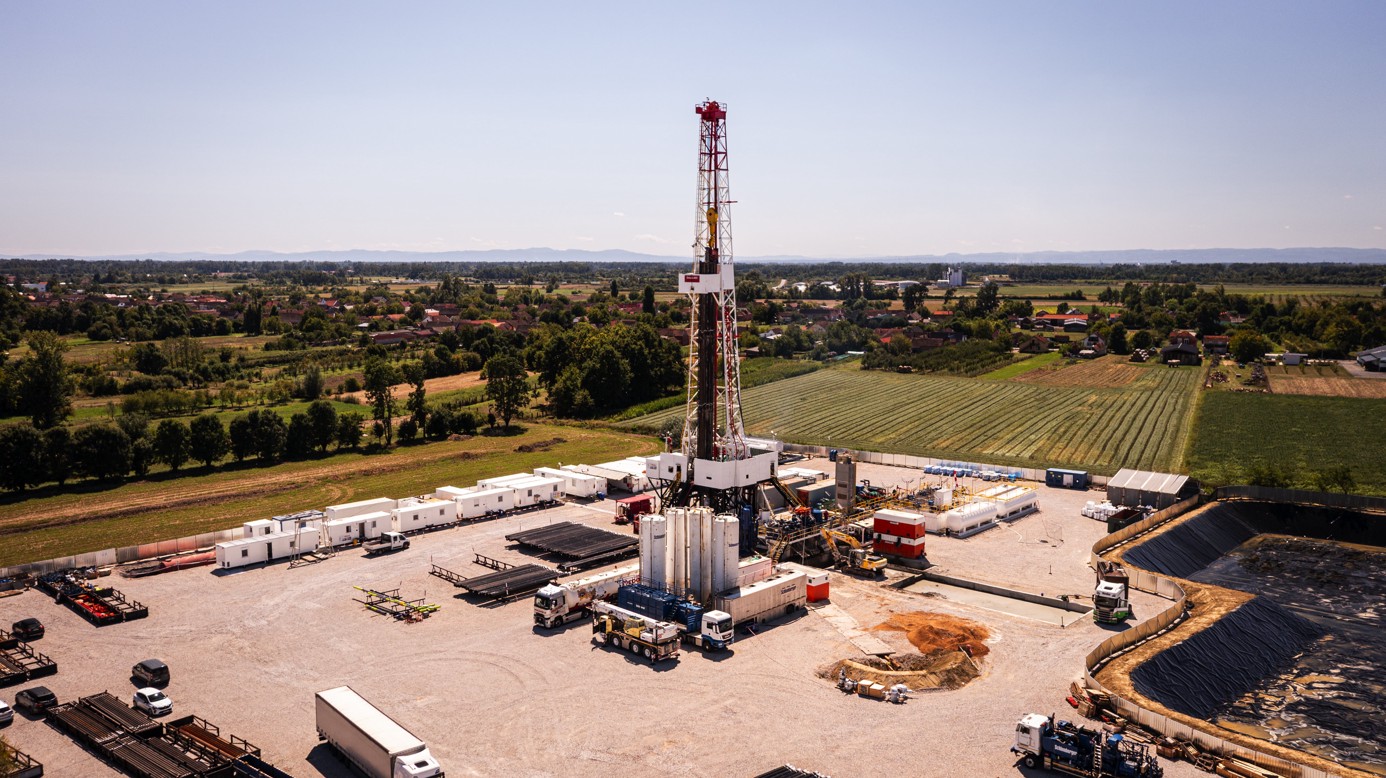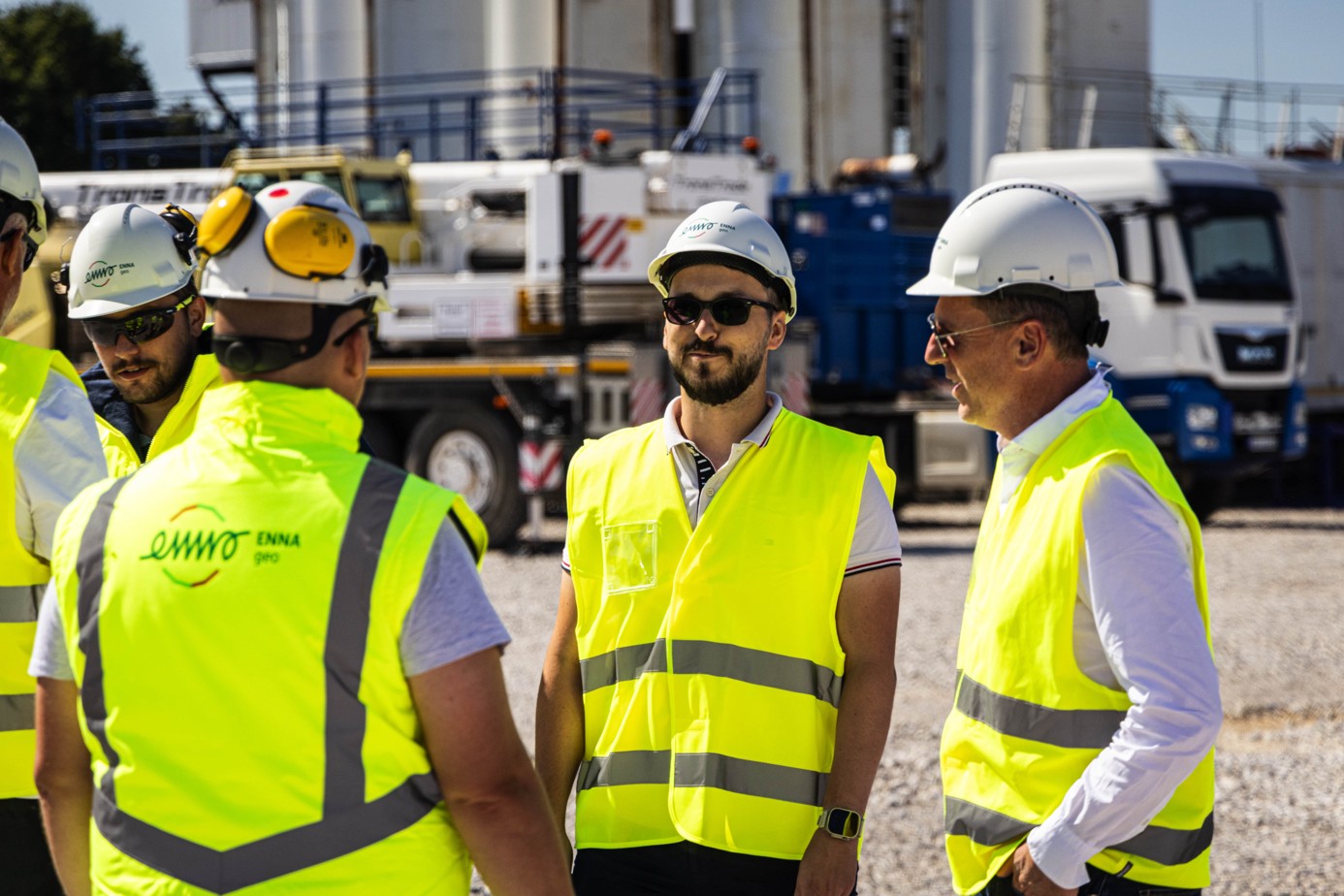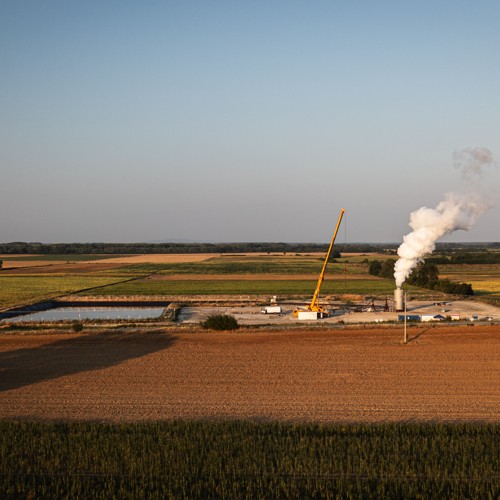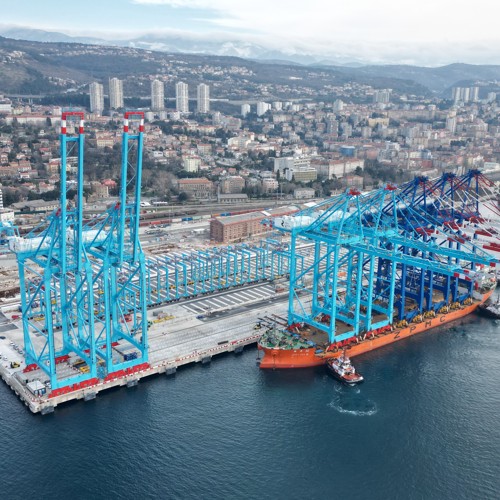What an achievement by local engineers! New geothermal wells are underway, bringing to life a scene worthy of a Hollywood blockbuster
ENNA Group’s geothermal power plant projects featured on the Telegram news portal
Date publishedSeptember 30, 2025
The Telegram portal has published an article about ENNA Group’s geothermal power plant construction projects, GTE Zagocha and GTE Babina Greda. Project managers Boris Vidoš and Nikola Legčević described the development process of a geothermal power plant, from the initial research phase and drilling to construction.
Below is the introduction of the article:
It looks like a scene straight out of an American blockbuster. On a gravel plain stands a sea of engineers – geologists, petroleum engineers, construction specialists, and mechanical engineers. Wearing helmets and reflective vests, they move from one side of the site to the other, analyzing what lies beneath their feet. Some carry small or large instruments, others examine detailed blueprints. They are surrounded by worker cabins and long metal pipes. Rising in the middle is a tall steel rig, leaving no doubt that this is a deep borehole reaching into the Earth’s crust.
But this is not Texas or Nevada. These are scenes from the drilling sites of Croatia’s future geothermal power plants. One is located near Slatina, the other in Babina Greda, and both are led by ENNA Geo. Valued at €260 million, the projects aim to harness the geothermal potential buried several kilometers below the surface.
What happens on the surface before drilling is only one piece of the puzzle. With every meter deeper underground, the challenges grow greater and more complex. While boreholes themselves are nothing new in the industry, geothermal wells – unlike oil and gas wells – have a significantly larger diameter at reservoir depth. This increases rock instability and the risk of collapse, which in turn drives up drilling costs.
As a result, power generators, cranes, top drives, mud circulation systems, blowout preventers, and forklifts are all part of their daily work environment. But for this interview, Boris Vidoš, project manager of the Zagocha geothermal power plant, and Nikola Legčević, project manager at ENNA Geo – both petroleum engineers by training – took a break from testing, assessments, and measurements to explain how this renewable energy source can best be utilized.
Tools weighing several tons
We returned to the basics. The depth of the geothermal reservoirs in these two projects ranges between 3,800 and 5,000 meters. Compared with other renewable energy technologies that are practically risk-free, they emphasize that geothermal power plants are always subject to geological and technical challenges.
A single geothermal borehole – and an exploitation field may contain four or more – costs between €10–15 million and takes 100–120 days to complete. Drilling is carried out using a range of tools, which in their basic form consist of a bit, heavy drill pipes, rods, stabilizers, and hammers.
“Drill and heavy pipes are tubes around nine meters long each, screwed together to connect the surface with the bottom of the borehole, which can be several thousand meters deep,” explains Legčević. These pipes transmit rotation from the top drive to the bit and serve as conduits for circulating drilling fluid to flush the borehole.
Croatia’s deepest geothermal borehole
At the “Slatina 2” geothermal water field, in early March 2025, the ENNA Geo team completed its first geothermal borehole, which is also the deepest geothermal borehole in Croatia, reaching a depth of 4,582 meters.
In August, additional so-called rigless testing was carried out on this borehole, named “Podravska Slatina GT-6beta.”
“By measuring the pressure and temperature conditions inside the borehole, we recorded a maximum temperature of 211 degrees Celsius at the bottom, while the geothermal water temperature at the surface measured 180 degrees Celsius,” Vidoš notes.

The full article is available on the Telegram.
News
#ProjectsMore news >
What an achievement by local engineers! New geothermal wells are underway, bringing to life a scene worthy of a Hollywood blockbuster

ENNA successfully completes additional testing at GPP Zagocha well, recording even higher temperatures

Ivana Meašić presented ENNA Group’s geothermal projects on Bloomberg Adria

Great success for the ENNA Geo team – confirmed geothermal potential of the Slatina 2 exploitation field!
